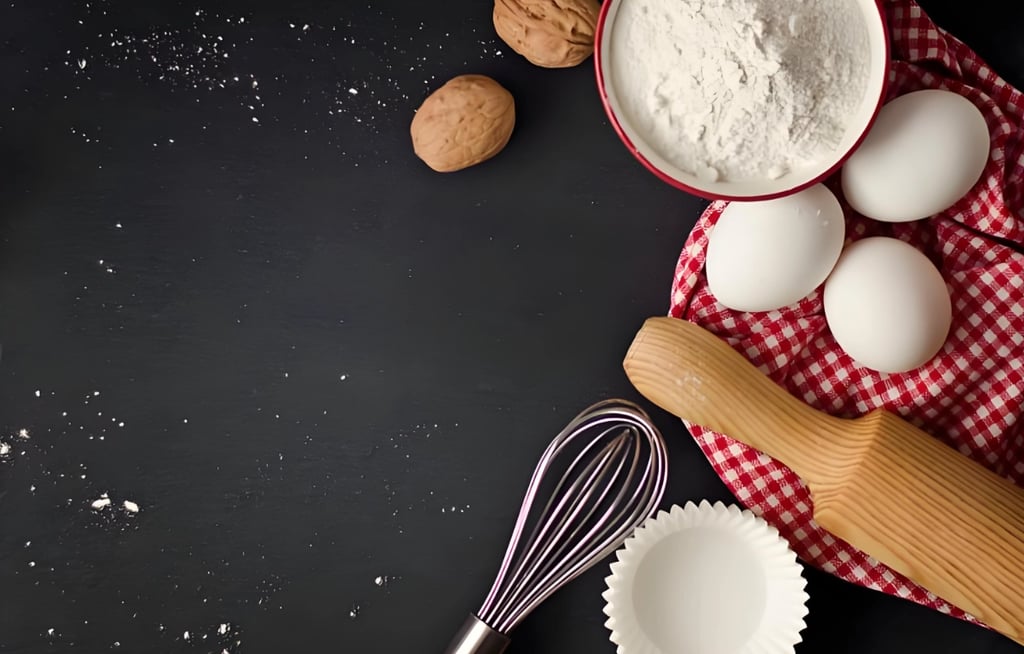How to choose a reliable rolling pin? Solve your kitchen problems
In the kitchen, the rolling pin is a common and practical tool. Whether it is rolling dumpling skins, making pizza dough, or making other delicacies, it can play a vital role. However, there are many types of rolling pins on the market, and many consumers are often confused when choosing. Today, let's talk about how to choose a reliable rolling pin to help you get twice the result with half the effort in the kitchen!
1. Material selection-determines durability and feel
First of all, the material of the rolling pin is directly related to its use experience and life. Common rolling pin materials include wood, stainless steel and silicone, and each material has its own characteristics.
Wooden rolling pin:
The traditional wooden rolling pin gives people a sense of intimacy, and it is usually comfortable to the touch. It is especially suitable for foods with softer dough. However, wood is easy to absorb moisture, which may affect the service life, so it is necessary to choose specially treated wood to prevent mold and deformation.
Stainless steel rolling pin:
If you are looking for higher durability, not easy to damage and easy to clean, then stainless steel is a good choice. Stainless steel rolling pins are usually heavier and can provide better rolling results, especially for rolling hard dough.
Silicone rolling pin:
For some beginners, silicone rolling pins may be an ideal choice. It has a smooth surface, is not easy to stick, and is very easy to clean. Silicone is also relatively light and does not easily make your arms tired when using it.
Interactive topic:
Which material do you prefer for rolling pins? The warmth of wood, the sturdiness of stainless steel, or the convenience of silicone? Welcome to share your views in the comment area!
2. Choose the right size-the needs of different doughs
The size of the rolling pin is also an important factor to consider when purchasing. Most rolling pins range from 30cm to 50cm in length. Choosing the right size can help you complete the rolling work more easily.
Short rolling pin:
Suitable for small-area operations, such as rolling small dough or pancakes.
Long rolling pin:
Long rolling pins are suitable for foods that require a larger working space, such as flatbreads, pizza dough, etc.
Interactive topic:
What kind of food do you usually make? How much do you think the size of the rolling pin affects your kitchen operations? Share your favorite rolling pin length.
3. Surface treatment of the rolling pin - avoid sticking
Many people encounter the problem of dough sticking to the surface when using a rolling pin, which affects the operating experience. In order to avoid this, it is particularly important to choose a rolling pin with a smooth and treated surface.
Some high-quality wooden rolling pins will be treated with anti-sticking, such as applying a thin layer of vegetable oil or beeswax, which not only keeps the surface smooth, but also makes the rolling pin more durable. Stainless steel and silicone rolling pins are generally smoother and less likely to stick to the surface.
Interactive topic:
Have you ever encountered the problem of sticking when rolling dough? How did you solve it? Welcome to share your secrets!
4. Handle design - comfort and stability
The handle design of the rolling pin should not be ignored. A comfortable handle can effectively reduce hand fatigue during use, especially in the case of long-term operation. Generally speaking, the handle should be ergonomically designed, comfortable to hold, and stable enough to ensure that the rolling pin can rotate stably.
Traditional handle:
Wooden rolling pins usually have symmetrical cylindrical handles at both ends, which are suitable for two-handed operation.
One-piece design:
Some modern rolling pins adopt an one-piece design, with the handle and the rod body made of the same material. Such a design is usually more modern and easier to clean.
Interactive topic:
How much do you think the handle design of the rolling pin will affect the user experience? What type of handle design do you like?
5. Price and brand - cost-effectiveness first
Finally, when choosing a rolling pin, you should also consider price and brand. Some well-known brands of rolling pins may be slightly more expensive due to quality and durability, but in the long run, they are indeed more worthwhile investments.
However, for consumers with limited budgets, it is not necessary to choose big brands. As long as you choose products with good reviews and pay attention to materials and design, the cost performance can still be guaranteed.
Interactive topic:
When choosing a rolling pin, do you pay most attention to price or brand? Are there any cost-effective recommendations? Let's discuss it together!
Choosing a reliable rolling pin can not only enhance your cooking experience, but also allow you to operate more efficiently in the kitchen. From material, size, surface treatment to handle design, every detail may affect the final use effect. I hope that through today's sharing, you can find a rolling pin that suits you and solve the pain points you usually encounter in the kitchen!
If you have any questions or experiences about rolling pins, please leave a message in the comment area and let's communicate together!
© 2025. All rights reserved.
Customer Service
Contact Us
Yangjiang Hexing Industry and Trade Co., Ltd.
Telephone/WeChat : +86 18145716076
Policy
About Us
eMail : hexing168668@hexingco.com
WhatsApp/WeChat : +853 66710476


